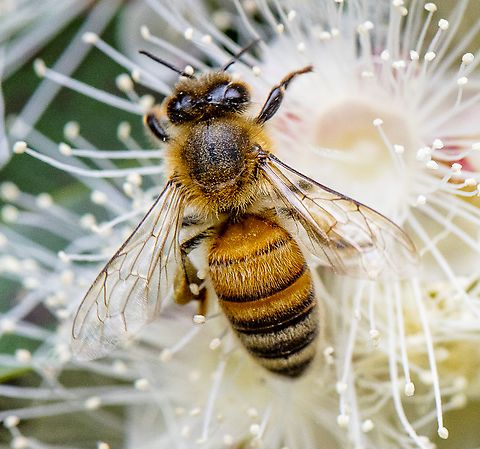![Western Honeybee antenna cleaner or Apis mellifera Bees have an antenna cleaner on each of their two front legs. The antenna cleaners are made of two parts: a circular notch in the basitarsus, which is fitted with stiff hairs, and a corresponding spur on the tibia. According to Mattingly (2013) “To use the antenna cleaner, the [bee] raises her foreleg over her antenna and then flexes her tarsus. This action allows the spur to close the notch and form a ring around the antenna.” Apis mellifera,Geotagged,United States,Western honey bee](https://s3.amazonaws.com/media.jungledragon.com/images/5803/157369_medium.jpg?AWSAccessKeyId=05GMT0V3GWVNE7GGM1R2&Expires=1767225610&Signature=vLiS7L7%2Byd%2Fd%2FDnGeiXlik7T73o%3D)
Western Honeybee antenna cleaner or Apis mellifera
Bees have an antenna cleaner on each of their two front legs. The antenna cleaners are made of two parts: a circular notch in the basitarsus, which is fitted with stiff hairs, and a corresponding spur on the tibia. According to Mattingly (2013) “To use the antenna cleaner, the [bee] raises her foreleg over her antenna and then flexes her tarsus. This action allows the spur to close the notch and form a ring around the antenna.”

The western honey bee or European honey bee is the most common of the 7–12 species of honey bee worldwide. The genus name "Apis" is Latin for "bee", and "mellifera" is the Latin for "honey-bearing", referring to the species' production of honey.

comments (7)